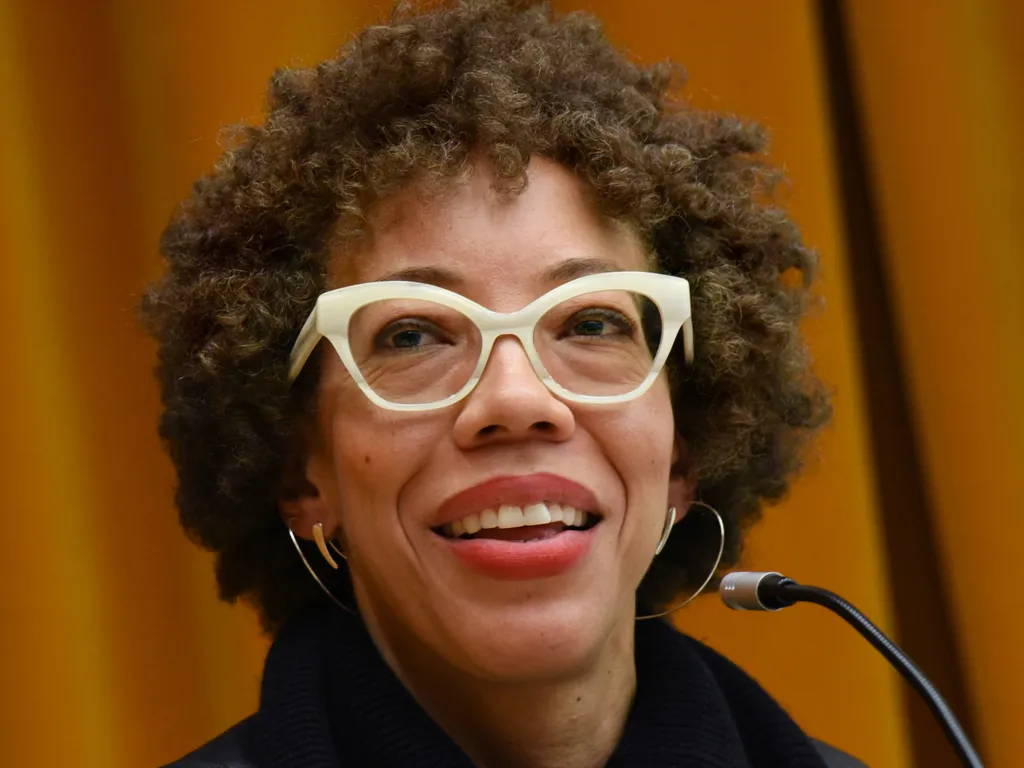In an interview with Anderson Cooper on CBS’ “60 Minutes”, painter Amy Sherald spoke about her decision to pull out of her solo exhibition at the Smithsonian’s National Portrait Gallery after the museum considered removing her painting of a Black transgender Statue of Liberty, titled Trans Forming Liberty.
“There were conversations about the work being censored,” Sherald told Cooper. “The show is ‘American Sublime.’ It was a whole narrative, and a trans woman is a part of that narrative, for me.”
According to the artist, who rose to fame with her 2018 portrait of Michelle Obama, the secretary of the Smithsonian, Lonnie G. Bunch III, proposed replacing the painting with a video discussing trans issues that would “contextualize the piece.” Sherald objected over concerns that the video would include anti-trans views.
“Any kind of contextualization around the work would have been unacceptable, and it would have deviated from how the work was originally conceived,” Sherald continued. “And because of that, I felt like my only choice was to pull out.”
In the weeks before Sherald officially canceled her show, it was reported that Smithsonian Institution’s exhibitions would undergo a review by the White House, which claimed the institution’s shows espoused an “anti-American ideology.”
When Cooper asked Sherald, whose portraits of Black Americans elucidate the realities of American life, if she considered her work patriotic, she replied, “Yes, I don’t think there’s anybody more patriotic than a Black person.”
“We’ve been here since the inception of this idea of what America is,” she continued. “We are deeply ingrained in the fabric of this country. This country would not be here if not for us. So I have to claim that patriotism. Otherwise, I’m just handing it over to somebody to give me the definition of what it means to be American. But I know what the definition of what it means to be American is. And I’m the definition of an American.”
“American Sublime,” originally organized by the San Francisco Museum of Modern Art and last shown at the Whitney Museum over the summer, is now expected to open at the Baltimore Museum of Art (BMA) on November 2.
